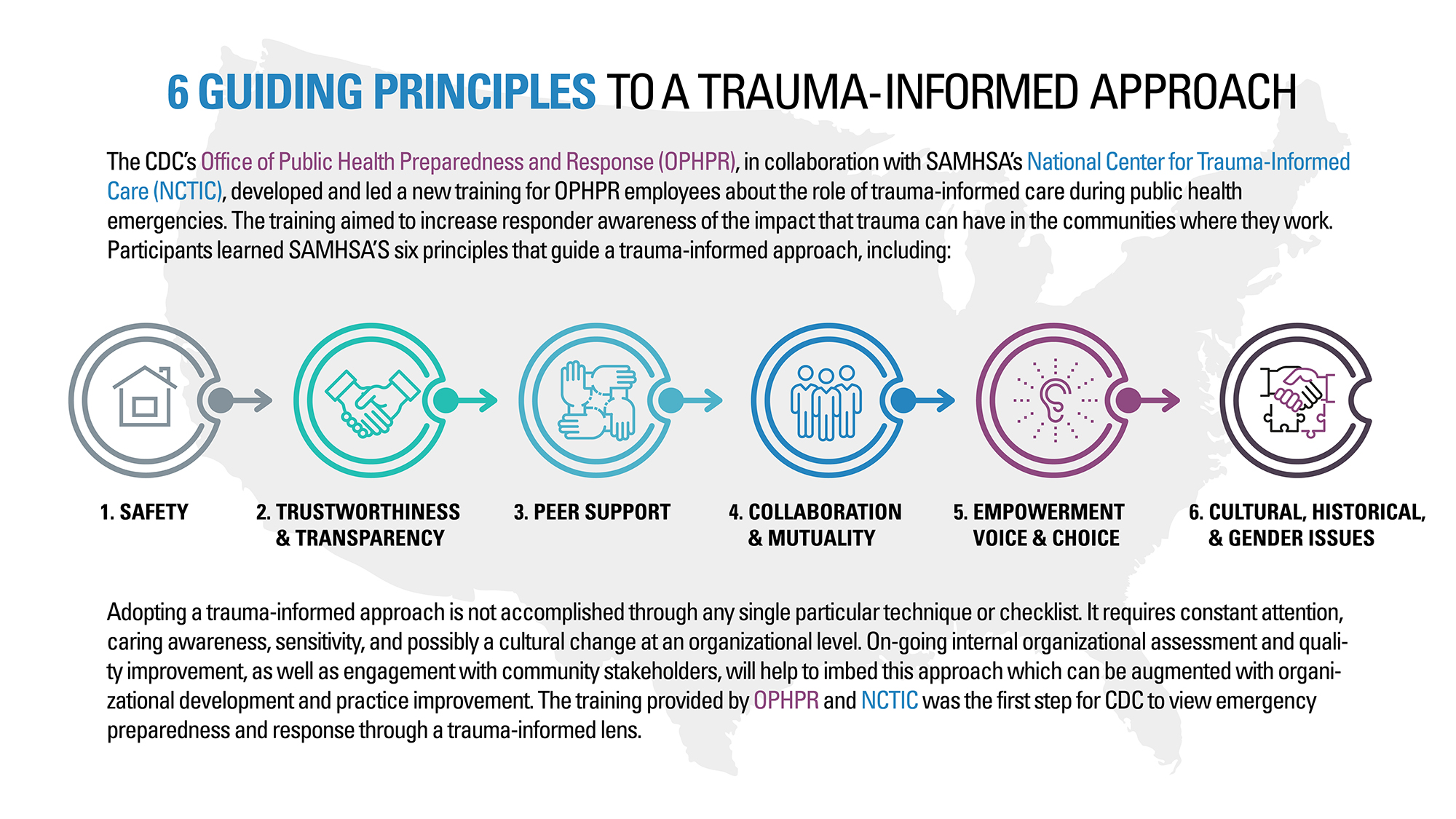It’s Time Animal Welfare Adopted a Trauma-Informed Care Approach

“To be truly visionary, we have to root our imagination in our concrete reality while simultaneously imagining possibilities beyond that reality.” – bell hooks
It’s National Mental Health Week which seems like a good time to explore what many experts have declared is the public health crisis of our time: trauma.
Specifically, I’d like to look at the organization’s role in actively reducing the traumatization of staff in the workplace.
I’m talking about trauma-informed care (TIC).
Trauma-informed care is a model of care that acknowledges the widespread impact of trauma amongst all populations and creates an environment of awareness and understanding for those that have been affected by trauma.
Those that have been affected by trauma include: the people in our communities who we support through our services AND the people in our communities who work within our organizations.
Why bother with TIC you ask?
Trauma impacts more people than not.
- For example, the majority of Americans report having at least one adverse childhood experience before the age of 18 (such as abuse, neglect, divorce, etc.).
- People who work in helping professions typically experience vicarious trauma or secondary traumatic stress – which refers to the impact of indirect exposure to difficult, disturbing and/or traumatic images and stories of the suffering of others – at some point in their careers. They may also experience direct trauma on the job as well.
- We have all been exposed to toxic stress and trauma due to the COVID-19 pandemic, along with increased racial violence and political unrest (that isn’t to say we’ve all been impacted to the same degree – we have not – just that we’ve all been impacted).
To spare you 2000 words, I’m not going to go into a detailed explanation of trauma, but if you’d like to understand trauma better, here’s a good free webinar.
What’s important for us to consider is that trauma can lead to such mental health and co-occurring disorders as chronic diseases, substance use disorder, clinical depression, anxiety disorders, and/or post-traumatic stress disorder.
People who have experienced trauma may feel isolated, powerless, or helpless in their relationships and environments. Trauma may also cause feelings of shame, blame, fear, and guilt. Trauma can also be exacerbated by environmental factors, such as triggers in our workplace.
And trauma can weaken a person’s ability to regulate stress, creating a heightened physiological reaction to triggers, and sensitizing them to future trauma, thereby increasing their chances of developing a mental health disorder.
Consider the professional ramifications of that last sentence.
How might a person’s ability to regulate stress effectively have an impact on their performance and interactions with other people within high-stress, trauma-exposed work environments like animal shelters?
Remember that trauma exposure is happening AT work and is ongoing. So no matter what happened to them before staff walked through the doors, their experience of secondary and vicarious trauma ON the job is likely going to impact their ability to DO their jobs well.
Let me speak plainly: our people are hurting. Their unhealed trauma ripples out and hurts the people and animals they serve (and one another).
Like the old saying goes, “Hurt people hurt people.”
Trauma (at work and home) is a root cause of so many of the issues that the field of animal welfare struggles to address decade after decade:
- Why are our adoption counselors having such a hard time with open, barrier-free adoptions?
- Why do they take behavior euthanasia decisions so hard?
- Why do they cross lines with people they’re supporting in community outreach programs?
- Why are they struggling to implement DEI training?
- Why are they so resistant to change and polarized in their thinking?
- Why do we have so much conflict between staff? Between staff and volunteers? Between staff and the public? Between rescue groups and shelters?
- Why does our staff struggle to regulate their emotions?
- Why do they over identify with the animals and their pain?
Look, I’m not saying it’s the ONLY cause for these issues. And I’m not making any excuses for harmful behavior.
But it is a root cause that we have NEVER addressed through thoughtful, non-reactive, organization-level approaches.
We’ve definitely tried individual approaches (Use the Employee Assistance Program! Do some yoga!) and those are important, but as we’ve seen (and the research backs up) they’re ineffective on their own.
Environment matters.
Given the intensity of the past 1.5 years and that we’ve had to reinvent how we work and live, this is the ideal time to start learning about Trauma Informed Care practices.
Other fields, such as human social services, have already paved the TIC-way in terms of how to create healthier workplaces, in which staff are better supported, thereby reducing the risk that they will cause harm to the animals and people they serve in their communities.
We do not need to reinvent the wheel. We can learn from experts in other fields.
Here are some basics:
SAMHSA uses a four Rs rubric to describe a “trauma-informed” organization, program, or system:
Realize the widespread impact of trauma and understand potential paths for recovery;
Recognize the signs and symptoms of trauma in clients, families, staff, and others involved with the system;
Respond by fully integrating knowledge about trauma into policies, procedures, and practices; and
Actively resist re-traumatization.

The 6 core principles of any trauma-informed approach are:
- Safety
- Trustworthiness + transparency
- Peer support
- Collaboration + mutuality
- Empowerment, voice, + choice
- Cultural, historical + gender issues
Organizations that integrate trauma-informed principles and strategies into their policies and procedures are better able to ensure that their workplace is culturally competent and trauma-informed for both staff and community members.
Organizations don’t shift to a TIC approach overnight. This is a long, slow, thoughtful process that typically takes place over the course of years.
There is no quick fix for this issue. We’re getting at the foundations of organizational health.
It’s not something we tackle in a lunch and learn. It’s not something we understand by reading a blog post shot off by someone who took a mental health first aid training (ahem, that’s me).
We’re not turning around a speedboat. We’re trying to turn around a freight ship in the Suez Canal. Not impossible, but it’s not happening quickly either.
The Missouri Model recommends the following four steps to becoming a trauma-informed organization:
Awareness: Organization becomes aware of how prevalent trauma is and its impact on workers, clients, and business outcomes.
Sensitivity: Organization begins to understand trauma-informed principles, causes, expressions and possible ways to overcome problems that affect workers and business.
Response: Organization begins to implement changes that affect culture, routines, and human resource processes to eliminate triggers.
Informed: Organization begins to implement trauma-informed practices and monitoring the impacts of changes made to policies and practices.
Here are some examples of trauma-informed strategies that can be implemented at the organizational level:
- Involve community members in the planning and development of programs that impact them.
- Educate all staff on the effects of trauma and a basic understanding of how trauma affects an individual’s mind and body
- Promote opportunities for staff development, connection, and self-care.
- Collaborate with staff on the development of organizational policies.
- Prioritize the creation of a safe, supportive environment that minimizes environmental triggers.

One simple (but not easy) way to begin our shift towards a trauma-informed approach would be to reframe the question “What’s wrong with you?” to “What happened to you?”
We already do this for the animals. Now it’s time to do it for the humans in our workplaces.
So, if we’re talking about mental health this week, we would do well to acknowledge one thing that’s “happened” to our staff is ongoing exposure to trauma on and off the job, coupled with some pretty unhealthy workplaces.
Because when it comes to mental health, environment matters.
This is a very brief look at a complex topic. If you’d like to learn more, please see the free resources linked below:
SAMHSA’s Concept of Trauma and Guidance for a Trauma-Informed Approach
A Trauma-Informed Approach to Workforces
Blueprint for a Vicarious Trauma-Informed Organization
In addition, we’ve just added more spots to my upcoming Compassion Fatigue Strategies Plus course, in which we’ll discuss this topic further. Class starts on 10/18 and you can register here.
To be clear, I’m not an expert in Trauma-Informed Care. But I know people who are! I’m part of a group that’s currently working to create an online learning event around trauma-informed care this winter, so can learn directly from the experts on this topic. More info about that in a couple of months.
Let's Stay Connected.
Sign up for ideas, updates, and your free copy of The ABCs of Self Care Workbook!
I heart boundaries and will never sell your email address. Unsubscribe at any time.

